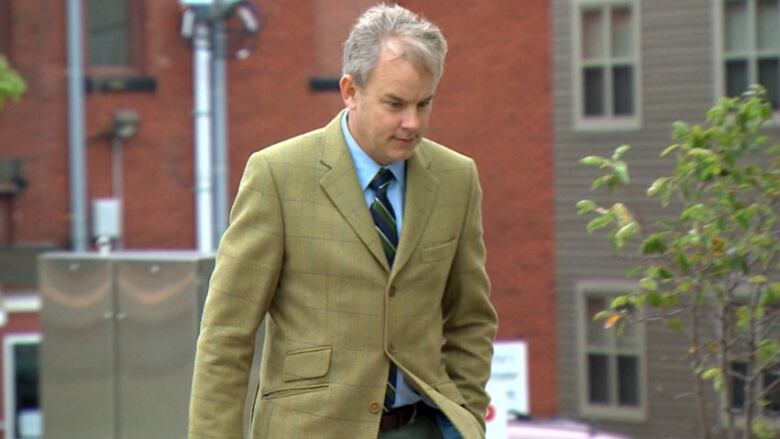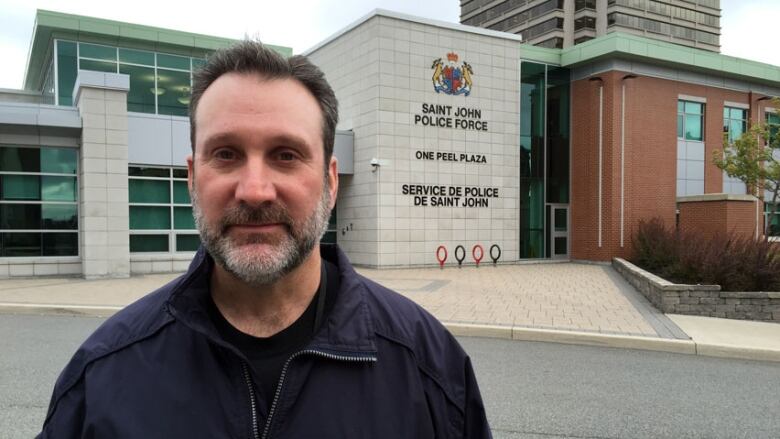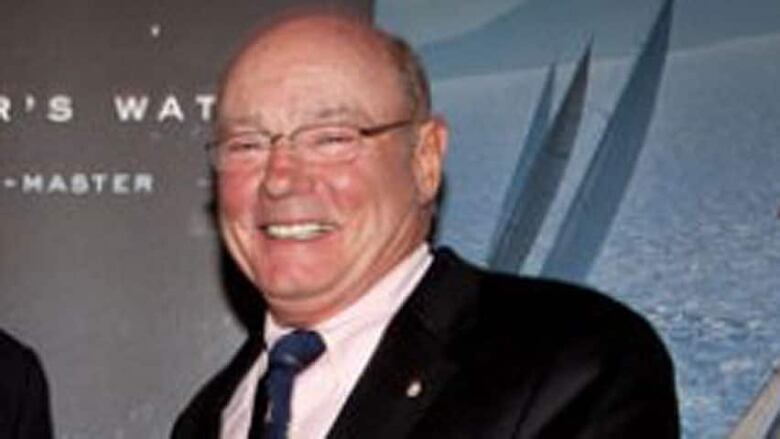Richard Oland murder investigation slowed by amount of evidence, jury hears
WARNING: Contains graphic material that may be disturbing to some readers

The jury at Dennis Oland'ssecond-degree murder trial heard Friday howthe Saint John Police Force's investigation into who killed Richard Olandin 2011became bogged down by the amount of evidence involved.
Sgt. Mark Smith, the head of the forensic identification unit, collecteddozens ofpieces of evidencefrom the crime scene and the victim's body, including blood,hair and fibres.

Smith said the RCMP told him if hewanted a quicker turnaround, he would have to limit the number of items and wait for those results before sending any more.So heinitially sent only five items for testing, he said.
Still, one of them a blood sample took more than a year to come back, the courtroom heard.
It's not like the crime shows on television where police get lab results right away, said Smith.
RichardOland'sbludgeoned body was found lying face down in a pool of blood in his investment firmoffice on July 7, 2011, with hundredsof blood spatter stains radiating around him, some as far as nine feet away.
The prominent businessman hadsuffered 40 sharp and blunt force injuries to his head and neck, the Crown has said.
"The injuries were completely through his skull in some places," Smith said on Friday.
Some of them were round and about three centimetresin diameter with a pattern in them, while others were long and slender as if made by a sharp instrument, he said.
No murder weapon was ever found and there were no signs of forced entry.
Oland, 69, also had six moderate to severedefensive wounds to his hands, as well as minor cuts or bruising to his chest, cheek and nose, said Smith.
DennisOland, 47, who was the last known person to see his father alive during a meeting at his Far End Corporationoffice the night before, has pleaded not guilty to second-degree murder.
Paper towel tested positive for blood
Smith said a subsequent batch of evidence sent to the RCMP includeda paper towel found in the garbage can of a bathroom outside Richard Oland's office.
A preliminary test of the paper towel indicated the possible presence of blood, so it was sent for further analysison Oct. 2, 2012 more than a year after Oland's death.Aswab sample of the main blood pool aroundOland'sbody was also sent at that time, he said.
Smith did not mention when those results came back or what they were.
He also never saidwhat became of some hairs found between the victim's fingers during the autopsy.
Lead Crown prosecutor P.J. Veniotdid not finish questioning Smith and said he would have to be recalled on Monday, for a third day.
Back door never tested for fingerprints
The court did hear on Friday, however, that anotherpiece of evidence the defence claims is critical to the case became contaminated and unusable.
Defence lawyer Alan Gold has suggested police did not pay enough attention toadoorin the foyer areaoutside Oland'ssecond-flooroffice, whichled to analleyway out back, almost at ground level, due tothe building beingon a hill.

Smith testified the door in questionwas never tested for fingerprints.
He said he had taken note of the doorwhen he first arrived at the scenearound 10 a.m.and hadplanned to check thedeadbolt."I wanted to fingerprint it," he said.
But he was the only forensic officer available that day and got tied up performingother tasks, such as photographing the crime scene,helping funeral home employees remove the body, and accompanying them to the morgue.
By the time he turned his attention to the doorabout six hours later it had been opened "a good amount" and he could see other officers searching the areaoutside, "negating" his plans to process the deadbolt, he said.
On Thursday, the jury heard thatConst. Stephen Davidsonhad also unlocked the door earlier that morningbefore Smith arrived.
Davidson testified that he unlocked it, looked outside and then locked it again. Hesaid he also went out the door to look around the alleyway at some point, but could not recall if that was on July 7, or two days later when he returned to the crime scene.
Other officers have previously testified that the door was wide open later in the day on July 7,and remained that way until at least the following morning.
Body treated like crime scene
Smith said he tested several itemsinside Oland's office for fingerprints, including computer equipment and digital cameras anything thatmay have been touched or handled by a possible suspect.
But he found nothing usable. "There was a plethora of fingerprints on top of each other," and he could not extract any detailed prints, he said.
Smith collected several DNA samples from Oland's office, which he methodically catalogued and secured back at the police station.
Numerous swabs and samples were also taken during the lengthy autopsy performed the following day at the Saint John Regional Hospital's morgue, including fingernail clippings, hair and blood.
Smith said Oland's body was treated like part of the crime scene examined from top to bottom, front and back for any clues in the case.
You'll get through this. It's just going to be a little tough for a while.-John Walsh, Court of Queen's Bench justice
His body was X-rayed, his wounds were all measured and photographed, and a special forensic light was used on his clothing and skintosearch for any fibres.
His organs and brain werethen examined, and toxicology and blood samples were taken.
Justice John Walsh cautioned the jurors about the 30 graphic autopsy photos submitted into evidence, which will be viewed repeatedly in the days and weeks to come.
"If at any time you feel uncomfortable and you feel you need to take a break, don't be embarrassed about that," said Walsh.
"Everybody's different," he said. "You'll get through this. It's just going to be a little tough for a while."
The trial resumes on Monday at 9:30 a.m. at the Saint John Law Courts building. It is scheduled to run until Dec. 18.












_(720p).jpg)


 OFFICIAL HD MUSIC VIDEO.jpg)
.jpg)



























































































